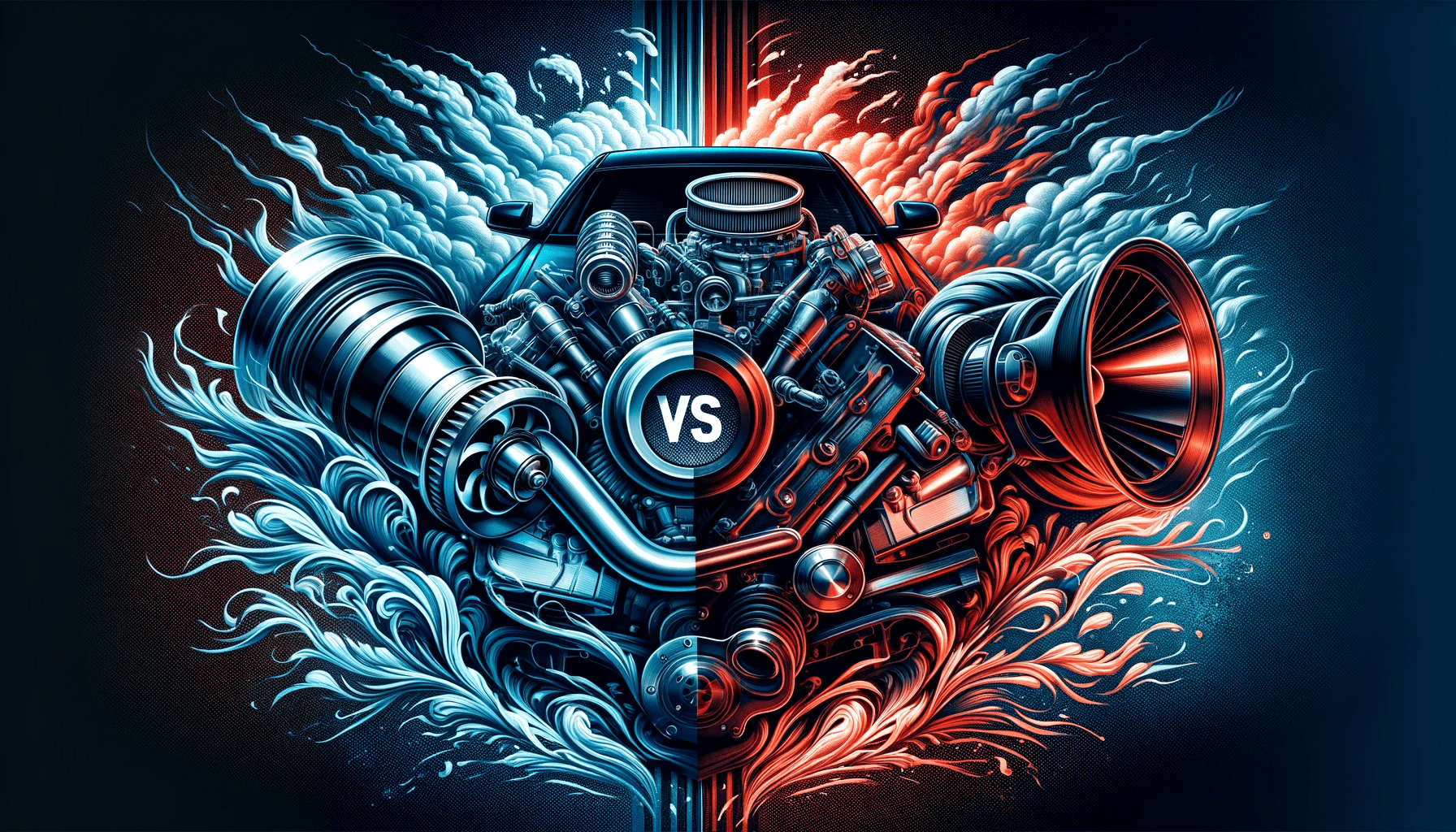Key Takeaways
| Aspect | Turbocharger | Supercharger |
|---|---|---|
| Acoustic Signature | Subtle and quieter | Pronounced and louder |
| Response Time | Noticeable delay due to turbo lag | Instantaneous power delivery |
| Durability | Requires regular maintenance | Typically more reliable |
| Impact on MPG | Less intrusive at idle | Reduces fuel economy |
| Technical Complexity | Higher, with potential for intercooling | Lower, often without intercooling |
| Suitability | Efficiency-focused applications | Immediate performance needs |
The auditory thrill of a turbocharger or the bold roar of a supercharger—these are the siren songs that lure performance enthusiasts into the world of forced induction. But beyond the symphony of power, there are stark differences in sound and performance between turbochargers and superchargers.
Turbochargers: The Silent Power Enhancers Turbochargers are often the go-to for a blend of power and efficiency. They rely on the kinetic energy of exhaust gases to spin a turbine, which then compresses air into the engine, allowing for a more potent fuel-air mixture. This process tends to be quieter, with the sounds of performance subtly emerging as the turbo spools up, creating an understated yet compelling acoustic profile.

However, this comes with the caveat of turbo lag, the momentary delay before the turbocharger delivers the boost, which can mute the immediate feedback some drivers seek. On the upside, this quiet achiever offers better fuel efficiency, especially noticeable at lower RPMs or while idling, providing an economic advantage over its supercharged counterparts.
For insights into the implications of turbocharging on fuel economy, consider reading turbocharger vs supercharger: analyzing installation costs.
Superchargers: The Instant Gratification Machines Superchargers are the extroverts of the forced induction family, making their presence known with a more aggressive sound profile. They are mechanically driven by the engine’s crankshaft, delivering power in real-time without the hesitation associated with turbo lag. This makes them a favorite among those who prioritize instant response and raw, unfiltered auditory feedback.
However, the nature of their design means superchargers can draw more fuel, lowering overall fuel efficiency—a trade-off for the immediacy of power they provide. Their simpler installation and maintenance routines make them an attractive proposition for those looking to avoid the complexities of turbocharging.
Explore the performance capabilities of superchargers further with best supercharger for 6.2 Silverado.
Comparing the Noise and sound differences
The performance of turbochargers and superchargers can be likened to two different musical styles: one is a crescendo that builds up to a powerful climax, and the other is a fortissimo that commands attention from the first note. Turbochargers, with their need for exhaust gases to spool up, often produce a whistling or whooshing sound that crescendos as the vehicle accelerates. In contrast, superchargers tend to have a consistent whine or growl that intensifies with the engine’s RPM, delivering a more constant and immediate auditory thrill.
For a comprehensive guide on superchargers and their impact on sound, dive into the supercharger for Jeep JK ultimate guide.
Conclusion on Noise and sound differences
Whether to choose the whisper of a turbocharger or the growl of a supercharger is a decision that resonates with the driver’s preference for sound and performance. Turbochargers are ideal for those who enjoy a balance of power and economy, while superchargers appeal to those who desire immediate feedback and the bold soundtrack of performance.